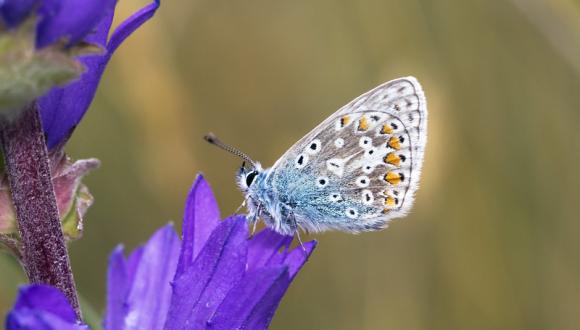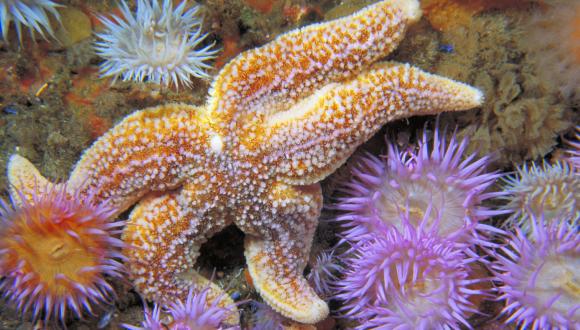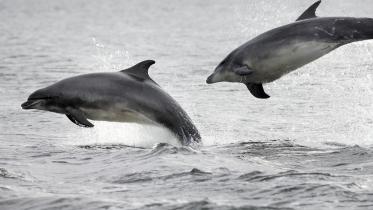Nature finance pilot: FAQs
We are partnering in a nature finance investment pilot that could mobilise £2 billion in landscape scale restoration of native woodland, create new jobs and support rural communities across all parts of Scotland.
Where will the investment happen?
Partners are piloting the investment in two locations, one in the Scottish Borders and one in Scotland's rainforest zone on the west coast. Once the investment model is proven to work, and has been assessed by project partners against the interim principles for responsible investment, the team are interested in other locations in Scotland. Please contact [email protected] if you have landscape scale projects that are seeking investment.
How will communities benefit?
All partners are committed to delivering genuine and long-lasting community benefit from the investment. Partners will be speaking to communities in the project areas to find out what their needs are and to identify the best structure to deliver benefits.
We will follow all relevant guidance from the Scottish Land Commission and others.
How will communities be able to engage and when?
We are designing the engagement process now and there will be multiple opportunities for communities to engage in these projects. Engagement in the Wild Heart Expansion Project in the South of Scotland is likely to start in early summer 2024. The Scottish Land Commission will be advising on this aspect of the investment.
Why aren't the investors giving all this money to community land owners?
This investment opportunity is available for communities who own land, NGOs and private land managers. There’s not enough community or NGO land in Scotland to deliver all the woodland we need to meet our climate change targets, so we need to invest in private land too.
Will there be opportunities for community ownership?
This project is not about acquiring land, or changing ownership, it’s about working with existing owners. The Scottish Land Commission will be advising on the approach to community benefit.
What types of trees will be planted?
The project aims to plant mixed native woodlands but may include some productive commercial species depending on existing land use and the views of consultees.
Who will pay for the trees?
At the moment, most new woodlands in Scotland are funded through the Forest Grant Scheme which is paid for by the taxpayer. In this new model, we will use an increasing amount of responsible private investment to pay for new woodland, reducing the burden on public finances and increasing the amount of woodland that can be created.
Is this about private investors buying more land?
No, this is about investing in nature restoration with existing land managers.
Is this about 'privatising trees'?
No. The majority of woodland in Scotland is on private land, along with woodland and forests owned by Forestry and Land Scotland, a public agency. Private investment in trees and woodland is not a new thing – private investors have been buying and selling commercial forestry for many years. The Woodland Carbon Code is designed to help bring responsible private investment in to woodland creation to help tackle climate change and the investment partnership is responding to that need.
How will this affect existing land uses, like farming?
We envisage a rich mosaic of woodland, peatland and other habitats with a range of land uses, including farming, recreation and tourism. The projects will be designed to complement and work alongside existing land use. For example, the land manager may seek to plant trees on part of a farm, but not the whole area. Indeed, one of our investment partners owns a farm in southern Scotland with 500ha of new woodland planted alongside 2000 ewes.
Approaches like agroforestry can blend food production with woodland cover, and sporting activity can still occur in and around woodland. This is not about wholesale landuse change – it’s a more nuanced approach that protects existing jobs and land use, while diversifying rural businesses and creating new jobs alongside these.
Why is NatureScot working with these companies?
NatureScot, and other public agencies, are working to grow responsible private investment in natural capital. This work supports the commitment from Scottish Ministers to grow responsible investment in natural capital, as set out in the National Strategy for Economic Transformation (March 2022). We have been in dialogue with Hampden & Co. following a workshop on climate change, and the ‘Finance for Nature’ event at COP26. They are keen to invest in natural capital in Scotland and wanted to work with us on this. Hampden & Co brought Lombard Odier and Palladium to the table, bringing in access to wider capital and investment expertise.
Given the climate change emergency and urgent need to invest in nature, we are working in partnership with these businesses, and look forward to learning about the best ways to bring responsible finance into nature restoration through a new natural capital market. We are also working with other businesses on a range of initiatives and our door is open to other companies and investors – this is not the only opportunity we are working on. We will apply the same due diligence process (which involves background checks and risk analysis) to other businesses and decide who best to work with based on the investment potential and benefits for nature.
Why are we encouraging responsible finance?
We have significantly increased public investment in nature restoration in recent years, through the Nature Restoration Fund and Peatland ACTION funding in particular. However, restoring our natural environment in Scotland requires enormous investment. The 2021 Finance Gap for UK Nature report from the Green Finance Institute outlines the gap between required spending and committed spending associated with the delivery of nature-related outcomes across the UK. For Scotland it estimated the overall size of the gap from 2021-2030 to be c.£20bn with the biggest gaps estimated for climate mitigation (c.£9bn) and biodiversity (c.£8bn). There is simply not enough public money to fill this gap, nor would it be fair to use public money in this way. That’s why responsible finance is needed to fill that gap.
Who will make money from this?
In line with the interim principles on natural capital investment, this partnership will aim to deliver significant and lasting community benefit from these projects. Land managers will also derive an income from the projects, providing long term security for rural businesses and supporting jobs. We will design the investment in a way that also creates new jobs and delivers benefits for nature, the local economy and tourism. Our investors will also make a return on the investment from the sale of carbon credits.
How is this different to current financing mechanisms?
The funds will come from a mix of public (through the forest grant scheme and other funds) and responsible private investment. The mix will be unique to each project and be designed with the land manager.
What about other habitats?
The main focus of the investment is woodland, because of the more mature market for woodland carbon. However, the projects will invest in peatlands and other habitats as well, and will respect existing habitats, such as those that support important populations of birds and other species.
Who will the carbon be sold to?
An ethical framework will be developed to ensure they are legitimate businesses who have credible carbon reduction pathways in place. Carbon credits generated through the UK woodland carbon code can only be ‘retired’ (which means used to offset their emissions) by UK based companies. It will be for the carbon offtaker to decide who to sell credits to. All carbon credits are tracked on the UK carbon market register. The project will not sell carbon credits to companies involved in the extraction fossil fuels.
Isn't this just green washing?
Greenwashing is when companies make claims about their environmental performance that they can’t substantiate. Or, when they use ‘good news’ to try and distract from negative impacts.
Carbon offsetting, using credible codes and governance processes is different. Locking up carbon in soils and vegetation is an essential component of getting to net zero. There is no other way to do this, as some activities will always generate some carbon emissions and they must be ‘offset’ by carbon sequestration somewhere else to deliver net zero emissions.
This project will only sell carbon credits to companies with credible carbon reduction pathways who are offsetting unavoidable emissions.
Is carbon offsetting appropriate in Scotland?
Yes. The Scottish Government’s view is that the main focus of climate change mitigation action should be on reducing greenhouse gas emissions and increasing nature-based carbon sinks here in Scotland. Where relevant in support of these efforts, ‘offsetting’ through investment in nature-based solutions should be in Scottish projects underpinned by government-backed codes (currently the Woodland Carbon Code and Peatland Code).
Carbon offsetting is an important part of global agreements on climate change and is supported by organisations such as the Science Based Targets Initiative and the United Nations.
How will you quantify and measure success?
The partners will develop a set of key performance indicators including: Area of habitat restored; Carbon emissions savings; Jobs created; Community benefits delivered.
Who makes the decisions?
We will be guided by, and be accountable to, a project Governance Board comprising all of the project members and Scottish Forestry.
Why are you focussed on these locations?
We chose these locations (in the Scottish Borders and Atlantic Rainforest) because they offer contrasting circumstances in which to test the investment model, and both have existing initiatives that we can build on. They have a mix of public, private land and environmental NGO owned land, and a range of existing land uses (including farming, sporting estates, and commercial forestry).
Will the investment create new jobs, or lead to job losses?
The investment will create new jobs planting, maintaining, and potentially processing timber from the woodland. The projects will need deer managers and a range of contractors to deliver these projects. Where possible, we will utilise local contractors to retain the economic benefits of the project in the local economy and will work with the local community and businesses to explore both short term and long term opportunities.
We want to design investments that deliver long term employment opportunities, building skills and capacity in the local economy. These could include stalkers, rangers, visitor managers, engagement practitioners and specialists involved in ecological monitoring and maintenance.
Our aim is to deliver the investment alongside existing land use, keeping and building on the skills and capacity in local businesses, including farming, sporting and other rural skills. Where land use change leads to changes in the skills and people required, we will support a transition to new roles with appropriate training as part of a just transition to net zero.
When will the investment happen?
We aim to start delivering action on the ground in winter 23/24 through a small initial pilot.
Can I get investment for my own project in Scotland?
If you are looking for investment for your own project, please contact: [email protected] Projects need to be large (thousands of hectares), scalable and in locations with a good pathway to delivery on the ground.
Does the taxpayer pay for this in any way?
The £2billion is all private money. There’s the potential to blend with public money for future projects. But the £2billion is not taxpayers’ money.
Will you use some of the finance yourself to fund projects - as NatureScot also owns land?
NatureScot will not handle any of the funds - the investment will go straight to the projects. Our role is to shape the projects and make sure we get the best outcomes for people and nature. We're not currently speaking to the investors about any NatureScot land at this stage, but may do so in future.
Is this a loan?
NatureScot colleagues have advised that there is the option for investment to be a loan, but it could also be an equity agreement, or investors may simply buy the carbon. The investment type depends what each land manager wants. The benefit of this opportunity is that the investors have an open mind on how the investment will work.
Is this project mainly loans to private landlords?
It could be a loan, but other investment models such as equity investment are also on the table. And it’s not just about private landlords, we hope that communities, NGOs and indeed some public bodies will be able to take advantage of the investment too.





